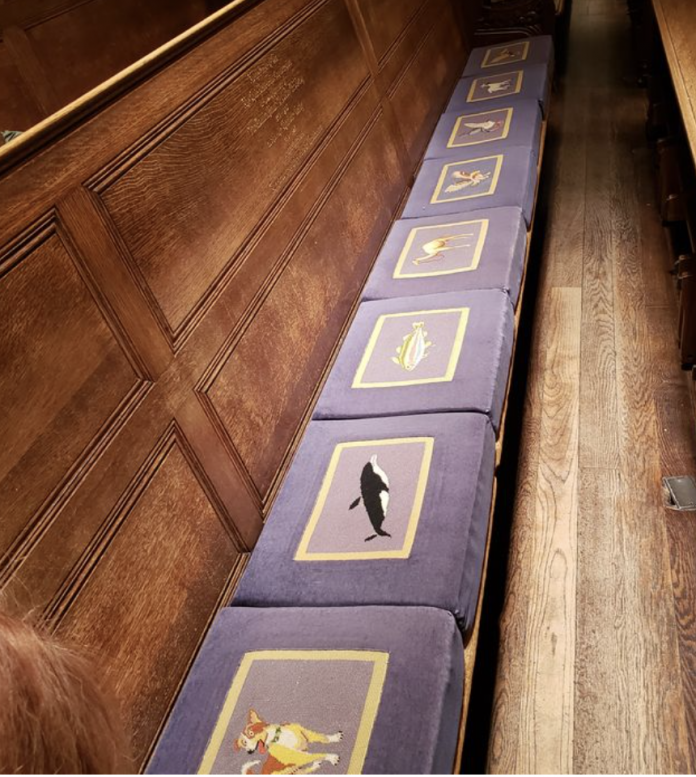It is a melancholy thing to reread the speech that George H.W. Bush gave in September 1990 at the laying of Washington National Cathedral’s final stone. “We have constructed here this symbol of our nation’s spiritual life, overlooking the center of our nation’s secular life,” he said, “a symbol which combines the permanence of stone and of God—both of which will outlast men and memories—a symbol that carries with it a constant reminder of our moral obligations.”
True words, but I don’t think Bush could have guessed that, even before he died, the Cathedral would already be outlasting memory. These days the church is cavernous, echoey, and broken—shaken a decade ago by an earthquake from which it will probably never recover—still a reminder of our moral obligations, though now, I think, the thing looks more like a warning. In that same speech, Bush remarked that whenever he looked up Wisconsin Avenue and saw the Cathedral, seemingly floating over the city, he felt as if God himself were issuing a challenge. I know that feeling well; I suspect even those with no faith at all, walking down on the Virginia side of the Potomac and happening to look up, know it too.
Earlier this week, I found myself in the Cathedral for what will likely be the penultimate Bush family ceremony to occur within its walls—George W. Bush’s funeral, of course, will be the last. Finally, five years after the president’s death, the Cathedral’s volunteer needlepoint committee had organized and completed a commemorative kneeling cushion in the elder Bush’s honor. There are more than two thousand pieces of needlepoint in the church, many of them designed and stitched by volunteers, those excellent women who, until rather recently, were never in short supply.
Bush’s cushion is part of a long-running series of kneelers that pay tribute to famous and important Americans. There are about two hundred of them, and they are collected in the Cathedral’s Saint John’s Chapel, one of my favorite places in the whole building. The selection and presentation of these kneelers is a catalog—in a goofy way that only 20th-century Episcopalians could have devised—of American saints.
Read it all in The American Conservative










